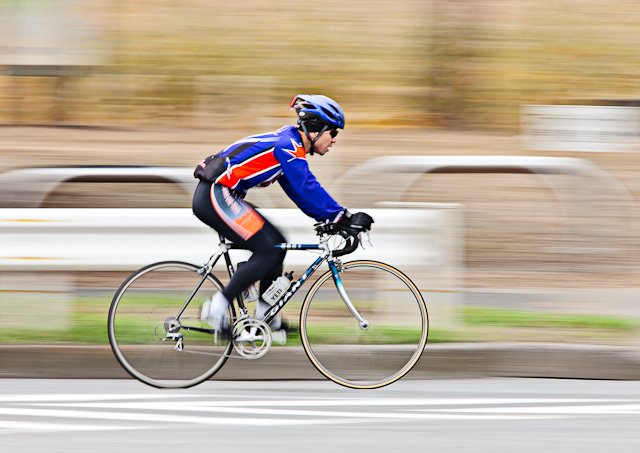The Unwritten Rules of Sport Photography
ARE YOU A SPORTS PERSON OR TRAINER?
This year, I was asked to document a fantastic event for Willen Hospice. This was a cycling event, and my brief was to document the start & finish of each race. For my own practice during this event, I photographed the cyclists as they returned to the start. This was so that I could take some fast shutter speed pictures and practice a panning technique used when photographing cars, bikes or cyclists.
I loved this event, as it gave me the chance to experiment and practice my fast shutter speed photography skills.
For this event, I used these techniques to capture the cyclists
Fast shutter speed photography
High speed flash sync.
Panning photography
FAST SHUTTER SPEED PHOTOGRAPHY
Theory - This means taking a picture with a high shutter speed, to freeze action, motion or a moment in time.
For this event, I took pictures as the cyclists started and documented them as they returned. This meant freezing the action as the cyclists passed me.
To freeze action, you can shoot a moving object at a high shutter speed or use flash to freeze their motion. When taking these images, I want to prevent the camera jitter, so I advise using a tripod.
I mentioned two ways to take a fast shutter speed image, and here are some start-off settings to use when photographing sporting subjects.
THIS IS THE BEST VISUAL FROM EXPERT PHOTOGRAPHY - this shows set times per set activity
These sports are suitable for fast speeds: racing cars/bikes, running, cycling, or sports games.
For these types of sports, flash may not be possible.
HERE ARE MY OWN SETTINGS THAT I PLAY WITH
ISO 100 - 400
Once the speed has been set, the aperture will be set from the camera light sensor.
Try Shutter Priority, which means the camera will set the aperture for the camera.
Shutter speed - 1/500 - 1/4000
HIGH-SPEED FLASH SYNC
I include this option when taking pictures of sports or moving objects. If you are taking a picture to freeze the movement, you can include flash lighting, as the light will freeze the movement with a fast shutter speed.
During the event, I used this technique as the cyclists passed me. My process was to stand at a distance from the start/end with my flashgun on the camera.
Behind the Scenes with the FJ400: Freezing Action with High-Speed Sync
Behind the Scenes with the FJ400: Freezing Action with High-Speed Sync
The flash will freeze a motion, and the fast speed will keep the movement from having the camera shake from the photographer or motion blur from the cyclists.
Theory - This process is called flash 'sync' speed - i.e. the fastest shutter speed, where the camera's sensor will be fully exposed to light from a flash – is typically 1/200sec or 1/250sec, and you'll not set a faster shutter speed unless you turn to manual mode.
This technique is used for portraits to capture a single sports professional. I often use it when photographing clients who wish for running, walking or cycling pictures.
PANNING PHOTOGRAPHY
This process can be fun and creative, as you try to capture still movement from the cyclist, but have the background looking like a landscape drag.
Check out the example of this process to the right.
It can look artistic when you capture multiple images and follow the cyclists as they pass.
PROCESS:
Set camera on shutter priority.
This process involves the slow shutter speed, instead of the high shutter speeds that I have mentioned above. The panning effect depends heavily on shutter speed.
Too fast, and you’ll get a tack-sharp image and zero blur effect.
Too slow, and you’ll get a smudgy, blurry subject.
The ideal shutter speed is between 1/30s and 1/125s.
Move along & in line with the subject, to create beautiful panning photography.
It's possible to pan while handholding your camera, but use a tripod.
Focus accurately, as your subject will move swiftly across the scene
The last thing to consider is your position in relation to what you will photograph, so that you can follow the movement swiftly.
In this blog, the I have discussed the essential techniques used in sports photography, drawing from my own personal experience during a cycling event for Willen Hospice. The post is divided into key sections detailing various photography methods:
1. Fast Shutter Speed Photography – I have explained how to freeze motion by using a high shutter speed, capturing cyclists in action. The ideal settings for fast-moving sports like cycling or running are highlighted, along with a reminder to use a tripod to avoid camera shake.
2. High-Speed Flash Sync – This technique involves using flash to freeze motion while maintaining a fast shutter speed. The post details the setup for using flash in sports photography, particularly useful for close-ups like portrait shots of athletes.
3. Panning Photography – A creative method to blur the background while keeping the subject in motion, panning involves following the moving cyclist with the camera. The author shares tips on selecting the right shutter speed for the effect, emphasizing the importance of accurate focus and proper camera positioning.
The blog aims to provide sports photographers with practical tips and techniques to capture dynamic action shots, while encouraging experimentation with shutter speeds and flash sync to achieve different visual effects.
WHAT NEXT?
Ready to take your sports photography skills to the next level? Try experimenting with fast shutter speeds, high-speed flash sync, and panning techniques in your next shoot!
If you found this helpful, why not:
Subscribe to my blog for monthly tips, tricks, and styling inspiration to elevate your fitness photography.
Take Your Skills Further: Ready to level up? Explore my one-to-one personalized tutorials and transform your photography.
Book a Session: Need professional shots for your brand? Let’s collaborate on your next photography project!
GET IN TOUCH TODAY TO START YOUR JOURNEY!




